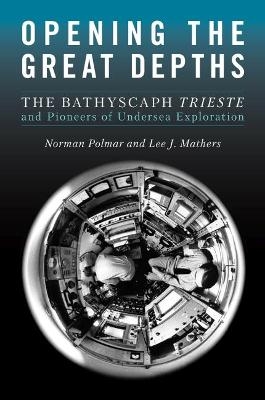
Opening the Great Depths
Naval Institute Press (Verlag)
978-1-68247-591-1 (ISBN)
We were certainly pioneers as the Trieste was one of only two such vehicles in the world--the French Navy's bathyscaphe FNRS-3 was the other. It meant that we had to 'write the book' about deep submergence operations in terms of technique and technologies. We learned by doing and by failures, although very few of the latter were serious. For example, if we needed a piece of equipment we would have to design it and make it. There were no commercial vendors who catered to deep submergence technology requirements. The market was far too small." --From the foreword by Capt. Don Walsh, USN (Ret.), PhD, U.S. Navy Submersible Pilot No. 1
Developed by French physicist Auguste Piccard and his son Jacques, the bathyscaph Trieste was a scientific marvel that allowed unprecedented scientific, technical, and military feats in the ocean depths. France and the United States both acquired and subsequently developed variants of the original bathyscaph. While both France and the United States employed the bathyscaph as a tool for scientific investigation of the deepest ocean depths, the U.S. Navy developed and employed the Trieste for military missions as well. From its earliest years, participants in the Trieste program realized that they were making history, blazing a trail into previously unexplored and unexploited depths, developing new capabilities and opening a new frontier. Comparisons with developments in space and the space-race between the United States and the Soviet Union often were made concerning the Trieste program and contemporary developments in undersea technologies and capabilities.
The Trieste opened the entire oceans to exploration, exploitation, and operations. The bathyscaph was a first-generation system, a "Model-T" that spawned an entirely new industry and encouraged new concepts for deep-ocean naval operations. Advances in deep-sea technologies lacked the "gee-whiz" factor of the concurrent space race, but were highly significant in the development of new technology, new knowledge, and new military capabilities.
Opening the Great Depths is the story of the three Trieste deep-ocean vehicles, their officers and enlisted men, and the civilians, often told in their own words, documenting for the first time the earliest years of humanity's probing into Earth's final frontier.
Norman Polmar is an analyst, consultant, and author, specializing in naval, aviation, and technology subjects. He has been a consultant or advisor on naval issues to three Senators, the Speaker of the House of Representatives, and three Secretaries of the Navy as well as to the director of the Los Alamos national laboratory, and to the leadership of the U.S., Australian, Chinese, and Israeli Navies. He has written or coauthored more than 50 published books. Lee J. Mathers is a former Surface Warfare Officer with an intelligence subspecialty. He attended the University of Utah, Central Michigan University, and the Defense Intelligence School, the last followed by intelligence duty in the Office of the Chief of Naval Operations. He has written for the magazines Proceedings and Naval History, and was a key researcher for the Naval Institute book Project Azorian by Mr. Polmar and Michael White. He now resides in Canada--working with Mr. Polmar on another book.
| Erscheinungsdatum | 08.07.2021 |
|---|---|
| Zusatzinfo | 32 black & w illustrations, 2 black & white figures |
| Verlagsort | Annopolis |
| Sprache | englisch |
| Maße | 149 x 231 mm |
| Gewicht | 775 g |
| Themenwelt | Natur / Technik ► Fahrzeuge / Flugzeuge / Schiffe ► Militärfahrzeuge / -flugzeuge / -schiffe |
| Geschichte ► Teilgebiete der Geschichte ► Militärgeschichte | |
| Sozialwissenschaften ► Politik / Verwaltung | |
| ISBN-10 | 1-68247-591-3 / 1682475913 |
| ISBN-13 | 978-1-68247-591-1 / 9781682475911 |
| Zustand | Neuware |
| Informationen gemäß Produktsicherheitsverordnung (GPSR) | |
| Haben Sie eine Frage zum Produkt? |
aus dem Bereich


